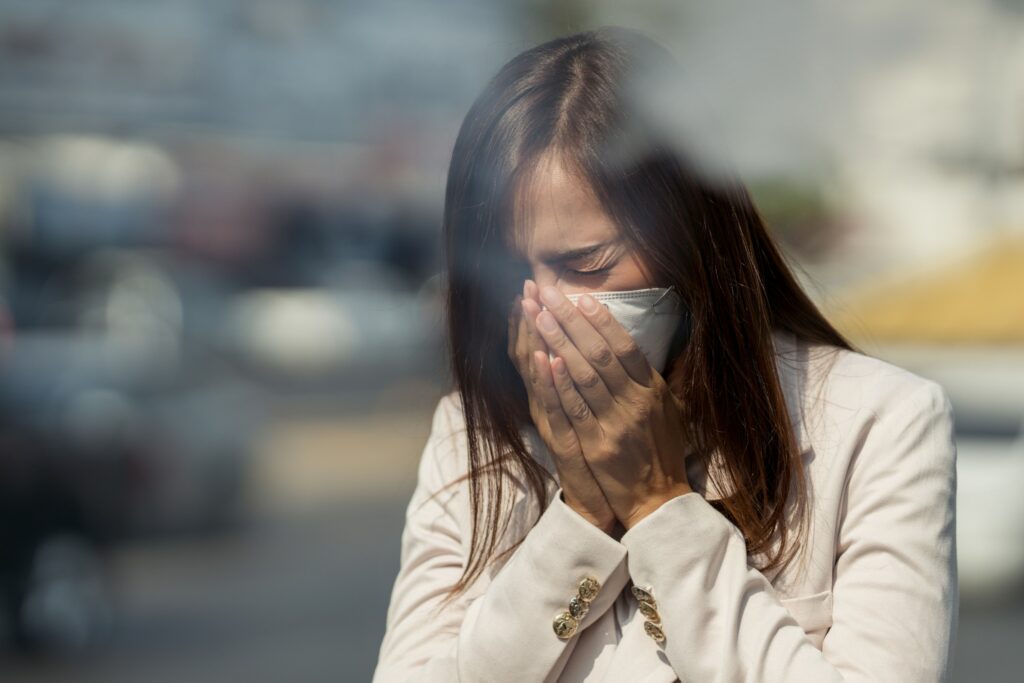
Heavy Rain, Flooding, and Chance of Severe Weather Staring Down the Southern U.S.
January 22, 2024
Posted: June 9, 2023 9:30 am





As of mid-day Thursday, there are still about 75 million Americans under air quality alerts as the wildfire smoke from Canada continues to drift across the border.
Local officials are urging people in the impacted areas to limit their time spent outside and lean on the use of masks for additional protection against the harmful smoke. Here is the latest on this developing situation.
Some of the worst air quality levels in the country were swirling in Philadelphia on Thursday morning. The Philadelphia Department of health issued a Code Maroon, the highest designation in the six-tier scale used to describe air quality.
A Code Maroon designation means that all individuals will likely be impacted by the poor air on some level. The City of Brotherly Love had the distinction of having the worst quality in the entire world for a short period of time late Wednesday.
The Philadelphia Public School District canceled all outdoor activities for the day while also recommending that students use masks while traveling to and from the school facilities. School districts in Newark and Elizabeth, New Jersey closed completely on Thursday due to the air quality.
Students in New York City already had a planned day off because of a staff event, however, the school district announced that students will learn remotely on Friday.
Washington D.C. issued a Code Purple air quality alert on Thursday, recommending that everyone should stay indoors if possible. The nation’s capital is experiencing worse air quality levels than it did on Wednesday as the smoke continues to push farther to the south.
The city shut down all district-run parks and playgrounds to discourage residents from spending time outside.

New York Gov. Kathy Hochul announced late Wednesday that the state will make one million N95 masks available on Thursday morning. Approximately 400,000 masks will be distributed in New York City at metro stations, state parks, the Javits Center, and at bus stations.
An additional 600,000 masks will be distributed to local governments through the state’s Division of Homeland Security and Emergency Services.
Gov. Hochul also announced on Thursday that the state will send some of its own forest rangers to Quebec to help fight the fires. The first responders will depart New York on Friday morning, joining crews from Maine and New Hampshire.
New York City hit its worst air quality level Wednesday afternoon when the index soared to 304.
The smoke is also creating mass disruptions in the skies. According to the Federal Aviation Administration (FAA), the smoke causes more delays and cancelations than fog or rain.
This disruption comes because the advanced navigation systems are less effective when trying to work through solid particles such as smoke.
Visibility has been greatly reduced by the smoke, necessitating that the pilots take more precautions when landing and taking off. This translates to more delays because of the additional time added to safely operate the airplanes.
Over 1,700 flights in the U.S. had been delayed on Thursday by the middle of the day. Air travel has been most impacted in the Northeast across busy hubs in New York City, Philadelphia, Boston, and Washington, D.C.
The smoke is being sent southward into the U.S. from Canada thanks to a persistent area of low pressure located off the coast of Atlantic Canada.
The forecast predicts that the dangerous air conditions could hang on for a few days. The air is forecast to begin to improve across the Northeast and New England as the weekend approaches. The bad news is that a shift in the wind direction will send the smoke farther west, bringing cities such as Pittsburgh and Detroit into the haze.
Forecasters also warn that the end of the weekend could bring the return of poor air quality in the mid-Atlantic, the Northeast, and New England as the winds shift again.
However, a major change in the weather pattern is on deck for early next week as a storm is expected to form over the Midwest. This storm will work to change the wind direction and send the smoke farther north and back into Canada, improving the air quality in the process. The storm system will also provide much-needed rain for the drought-stricken region.
Did you find this content useful? Feel free to bookmark or to post to your timeline for reference later.

January 21, 2024

January 19, 2024

January 18, 2024